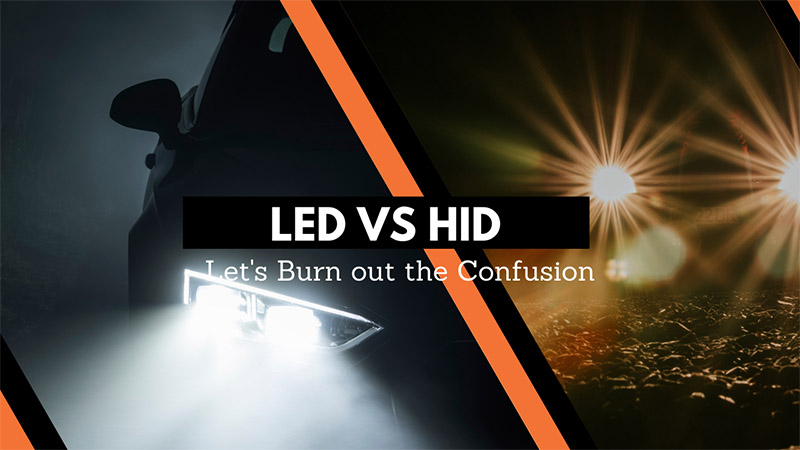How do car headlights work? Car lighting systems

Car lighting systems have evolved a lot over the years. We went from using literal oil lamps just a century ago, to now using lasers and LEDs to light up the roads Read More yume x13
With each iteration of the headlight, the efficiency and longevity of the light used have gone up. In some cases, this was simply caused by changing the design of the housing. While in others, it took drastic changes to the process that produces the light itself.
However, even though headlights have gone through more than 4 generations of change. The actual process of how they work is still pretty much the same. We have covered the same in our article about the different types of headlights.
In most cases, it is a chemical process that produces visible light as a byproduct. Even with modern LEDs that have taken the chemical process out of the equation. The basic principles of the headlight housing and how it lights up the road remain the same.
So, let us take a closer look at how do car headlights actually work, and how the process has evolved over time.
Headlight Components
When we talk about headlights, we aren’t just talking about the bulb itself. There are multiple components that make up the entire headlight assembly. Each of these plays a vital role in ensuring that the headlight works properly.
- Headlight Housing: This is the most obvious part of the headlight assembly, i.e the lamp box itself. These boxes feature transparent housing in the front. Which attaches to the sturdy plastic backing that actually mounts to the vehicle.
In older vehicles, the front often featured actual glass covers. While most modern vehicles feature a special kind of transparent plastic. These lamp boxes house all components of the headlight, including the gaseous ones. And are usually designed to match the look and aesthetic of the vehicle.
When it comes to upgrading lighting systems, there are plenty of aftermarket components. That helps upgrade these housings to support retrofit LEDs. However, some brands like OSRAM go as far as creating entirely new lamp boxes from scratch. For popular models from well-known brands like VW, BMW, and even Ford.
- Reflectors: On the inside, these lamp boxes also feature reflectors that help focus the light. In older models, these reflectors are often one single unit. While in modern vehicles they use a bunch of different pieces set at specific focal lengths.
If we go into the ultra-luxury segment, we can also see the use of special mechanisms. Which can even rotate these reflectors to direct the beam in sync with the direction of the car.
In some models, these reflectors are further augmented by the use of projector lenses. Which can be set both before or after the bulb. Based on the type of headlight in question. They help focus and magnify the light further, and often work in sync with directional beam systems.
All these different types of housings serve the same function. Of keeping the light protected from the elements of nature. While also focusing and spreading the light beams for optimal visibility. In older models, they even helped maintain the vacuum needed to house the inert gases.
One downside of those older sealed beam systems was that with each breakage the entire assembly had to be replaced. Since the filament got burned out as soon as it made contact with outside air. Today, you just need to change the bulb itself.
- Headlight Bulb: The bulb is probably the one part of the headlight assembly that has gone through the most changes. In early models, the bulb used to comprise the entire headlamp. With the glass housing holding inert gas inside a vacuum seal.
The tungsten filament got heated to produce light and warmth as a result. One disadvantage of this kind of system was that it used to take a bit of time to hit peak brightness. Moreover, you consumed a lot of energy, since a large portion of it used to be simply wasted in the form of heat.
Over time the filament was gradually upgraded to feature both a high beam and low beam system in one bulb. Before this change, you actually needed two separate headlights on each side.
Modern halogen bulbs don’t need vacuum-sealed housing, as they house the gases they need within. The filament used is also better, since it doesn’t blacken the inside of the housing over time. This change to halogen also removed the problem of having to wait for the headlights to warm up. As of now, you can get peak brightness right from the start, without any flickering either.
You can find lots of options for high-performance halogen bulbs from a bunch of aftermarket manufacturers, like OSRAM, Phillips, and others.
HID bulbs add to this process by including special metal flakes that burn far brighter. While modern laser lights choose to replace the filament instead, with actual lasers.
All of these systems use the same principle of chemiluminescence to produce light. This has been one constant in the past 100 years of headlight usage.
With the only disruptive technology being modern LEDs. Which instead rely on direct electroluminescence. By replacing the filament and gases, with a light-emitting diode.
- Off-road Headlight Assembly: In off-road conditions, you need more usable light than what your standard car headlights can provide. So, aftermarket manufacturers like OSRAM often create off-road external lights. Which feature special off-road headlight assemblies for sturdier build quality.
These assemblies are specially dampened against various vibrations and shocks. While also being properly weatherproofed against rain, snow, and even hail. They even come with special mounts that can be fit on the bumper, roof, or other parts of the vehicle. To create a more comprehensive lighting setup.
Each of these components plays a vital part in ensuring that the headlight works properly. You can replace one or all of them to get a better aftermarket lighting experience.
Even car companies recognize the value of these upgrades. This is why we often see modern vehicles feature multiple lighting systems. Including LED DRL’s, and LED fog lights.
This was an overview of how headlights work. And all the different purposes individual components serve. Understanding this process will help you decide how you can upgrade your car. For a better lighting experience. We suggest taking a look at all the options before making up your mind. As we have proven, headlights are more than just bulbs Read More








